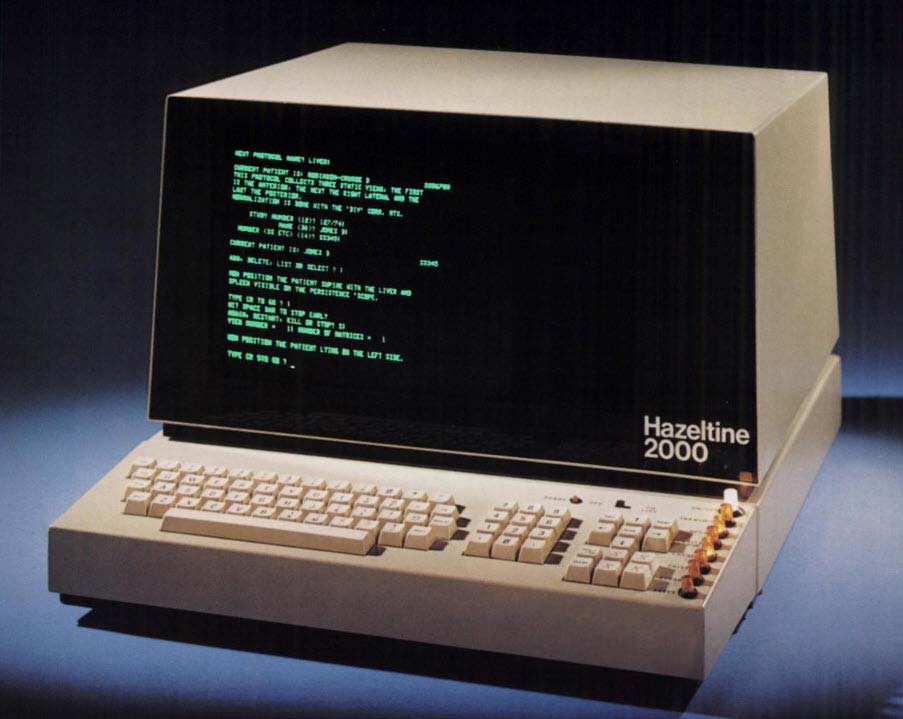The Hazeltine 2000 Video Terminal

The Hazeltine 2000 was the first video terminal I experienced; there was one in the SSIO area, Columbia's brand new self-service input/output area where users of the central IBM 360/91 mainframe (such as engineering students like me) could submit batch jobs by feeding their card decks to a IBM 2501 card reader and then collect the resulting output from one of a pair of IBM 1403 line printers. The Hazeltine was used to monitor the progress of the job through the queue and, when finished, to see which printer it would come out on.
When I started working at Watson Laboratory in the Columbia Computer Center's Systems Group in 1974, each office had one Hazeltine 2000 shared by two or three programmers, like the three witches who shared one eyeball.
H2000 specifications
| Construction: | Monitor + detachable keyboard |
| Display: | 27 rows x 74 columns, 5.75" x 8.5" display area |
| Screen: | 12" diagonal green phosphor |
| Character matrix: | 5x7 dot matrix |
| Character set: | 64 US ASCII (uppercase only) plus 1 special character |
| Keys: | 51 typewriter keys |
| Auxilliary keypads: | Numeric, editing, and cursor keypads |
| Visual indicators: | Keyboard lamps on right |
| Interface: | RS-232-B |
| Communication Speeds: | 110-9600bps (depending on model) |
| Dimensions: | 12.5"x18.5"x16.0" (monitor); 18.5"x6" (keyboard) |
| Minimum table depth: | 24" |
| Weight: | 62 or 63 pounds (depending on model) |
| Optional accessories: | Tape cassette, printer, remote monitor |
A 25x80 display with lowercase letters was available as an option. The 5-position serial-port speed selector was available for three different sets of speeds.

The right-hand side of the Hazeltine 2000 keyboard, showing the auxilliary keypads and indicator lights. The arrow keypad includes XMIT, PRINT, and HOME keys. The six keys below it are labeled CLR/FG, I/C (Insert Character), D/C (Delete Character), CLEAR, I/L (Insert Line), and D/L (Delete Line). The lights are labled ON/OFF (this is also the power switch), TRANSMIT, RECV, PARITY ERROR, LOCAL, PRINT, BREAK, and RESET. Thanks to Tom De Bellis (formerly of Watson Lab) for the lower photo, scanned from an H2000 promotional leaflet. You can view the leaflet at high resolution if you wish (these are big files, 1MB to 2.5MB each):
[ Page 1 ] [ Page 2 ] [ Page 3 ] [ Page 4 ]
- Hazeltine 2000 Operating Manual, Hazeltine Corporation (1972).
- Hazeltine 2000, Wikipedia, accessed 1 April 2021.